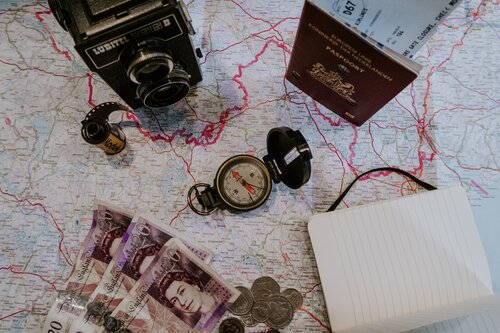
Give where you go.
Tourism accounts for 10% of global GDP and employs 1 in 10 people across the world (1). That makes travelers serious drivers of economic and human development, something that’s been highlighted by the UN as an enormous opportunity for achieving the world’s Sustainable Development Goals.
All to say that we as individual travelers can have a significant and positive impact on the world - and we should. Because we love the world, that’s why we’re always trying to get out into it, assumedly.
There are many, many ways that we as conscious travelers can strive to have this positive impact, foremost of which is probably becoming more aware of and acting to counteract the environmental consequences of traveling in general. More on that in a separate blog. For this post we’d like to focus on how we as travelers can empower the communities we visit through charitable giving.
The concept of giving back to the places we visit is probably not unfamiliar to most of you reading this.
A study done in 2015 actually found that 55% of travelers surveyed gave back to the communities they visited either through volunteering, or in-kind and cash donations (2). This was especially true of millennial travelers.
“On average, [traveling] millennials gave two and a half times more hours, nearly three times more cash, and four and a half times more in-kind than over 55s”
All good news! However, there are some shortcomings within the current state of travel giving.
For one, it would be nice if a greater majority of travelers gave back. Even just a modest 1% increase in the number of travelers donating could mean ~$1.3 billion more dollars a year for nonprofits the world over (3).
The great news is that we as individuals can drive this change - 53% of travelers that did give did so because of the influence of family or friends and 21% gave back because of a conversation with a fellow traveler (2).
Spread the word to your circle to give where they go, they’ll listen to you!
Another unfortunate shortcoming though is where and how travelers give back. Even with a generous heart there’s a potential for harm, whether through the pitfalls of voluntourism or charity scams, giving time and money in the wrong way or to the wrong places can have unintended consequences. This aspect has already been well documented in the mainstream, almost to the point of cliché.
Similarly, placing ourselves at the center of where our donation should go can also be problematic. We might be particularly touched by the plight of stray dogs we saw on a trip through Guatemala and fundraise to start a dog shelter in Guatemala City. Arguably, this money might have been better spent elsewhere but the broader point is that we, the visitor, should not be the one deciding what problems are priority to address. The people from the communities we want to help should be the ones doing that.
This leads us to our recommendations for how to give where you go more effectively:
-
Develop awareness - Do your research on the context of the place you’re visiting. Read articles, watch documentaries, talk to people.
-
Shift agency - Let locals of the community you’re visiting decide how best to use your donation. Look for organizations where decision making authority rests with people within the community it supports.
As travelers increasingly strive for more authentic connections with the communities they visit, these two principles should help create them.
Take the time to know the story of a place. Recognizing the people that live there as agents of their own story and not as mere props in ours is a powerful bridge to understanding and compassion.
Unsurprisingly, travelers that interact more directly with the communities they visit also end up giving almost double what other travelers do (2).
At Outpatch, we find this to be a really hopeful trend because we see giving where we go as an act of solidarity with our fellow humans. An act made all the more explicit by giving to those far away from our homes to those that live very different lives than we do. This solidarity is a cornerstone of our path to happier, healthier, and more equitable communities. When we see ourselves in others, work towards the common good gets more personal.
Our small contribution towards that end is to try and get some of the $21B a year travelers spend on souvenirs (4) to nonprofits so they can use the additional funds to support and build their communities, to all of our benefit.
Don’t let the places you visit fade into memories, let those experiences shape you and drive your passion for a better world. Give where you go.
Sources
-
United Nations World Tourism Organization, 2017 Annual Report
-
Phocuswright, “Good Travels: The Philanthropic Profile of the American Traveler”, 2015
-
Based on the median traveler donation amount of $100 (2) and 1.3 billion international travelers a year (1)
-
Technavio, “Global Gifts Retailing Market 2020-24”, 2020
